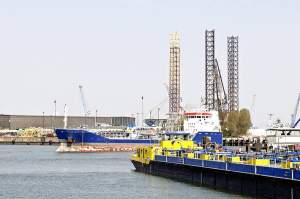
Home » Legal News » Pump it Up: U.S. Increases Natural Gas Exports
Pump it Up: U.S. Increases Natural Gas Exports
June 04, 2013 10:31pm
The United States will start exporting more of its energy bounty, which is making gas and oil companies very happy, American manufacturers skeptical, and the majority of environmentalists enraged.
Last month the United States Energy Department approved a second application to export natural gas from a facility along the Gulf Coast partially owned by ConocoPhillips. This approval comes two years after the Department of Energy granted the first natural gas export license to Cheniere Energy, which also operates a plant on the Gulf Coast.
The two-year gap was the result of the Department of Justice waiting for studies on how gas exports would affect the economy. Would said exports drastically raise prices for consumers? Would they cause manufacturers to take jobs elsewhere? These studies are now over, and the majority of them revealed that an increase in exports would yield positive results for the economy.
Presently there is every indication that the pace of export licenses will quicken. During a recent congressional hearing, an official for the Department of Energy told legislators that it took roughly two months to approve the most recent applications.
The drive to export natural gas stems from the nation’s supply—we simply have too much of it. Thanks to the energy boom, U.S. natural gas prices have dropped significantly and the flow of gas from newly drilled wells has been shut off, as pumping costs more than the gas can be sold for.
Prices in other regions of the world are nearly not as low. In Europe, for example, natural gas prices are three times higher than in the U.S. In Japan, they are nearly five times as high as domestic rates. These fluctuations offer a substantial incentive for energy companies to export their surpluses.
The Department of Energy currently has 20 export applications pending, the majority coming from smaller firms.
If exports are increased, gas prices may rise between 5 and 9 percent, with a corresponding 1 to 3 percent rise in utility bills for residential consumers.
Source: EPA.gov
Comments
Must Read
 Air Pollution Overview
Air Pollution OverviewAll living things are entitled to breath air that is not unreasonably polluted.
 All You Need to Know About The Clean Water Act & Its Amendments
All You Need to Know About The Clean Water Act & Its AmendmentsThe Clean Water Act laid the the foundation for the body of environmental laws pertaining to the fight against polluted water.
 Environmental Justice Explained
Environmental Justice ExplainedEnvironmental justice is a concept that is closely associated to social justice.
 Environmental Law Overview
Environmental Law OverviewEnvironmental law covers a myriad of topics that involve the protection of the environment.
 Environmental Laws At A Glance
Environmental Laws At A GlanceEnvironmental laws are meant to protect the environment, to ensure a healthier future for humanity.
 Environmental Remediation Explained Easy
Environmental Remediation Explained EasyEnvironmental remediation is process by which contaminates or pollutants are removed from an area.
Tips


